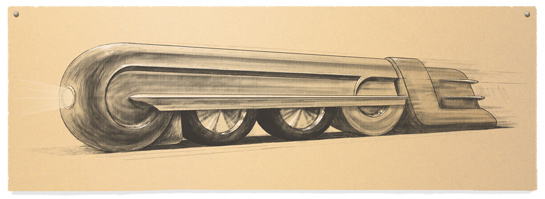
honors Raymond Loewy, the father of "industrial design",
who, for example,
designed (Wikipedia):
"the Shell, Exxon, TWA and the former BP logos, the Greyhound Scenicruiser bus, Coca-Cola vending machines, the Pennsylvania Railroad GG1 and S-1 locomotives, the Lucky Strike package, Coldspot refrigerators, the Studebaker Avanti and Champion, and the Air Force One livery."The "Shell" design became so recognizable that the printed name could be dropped from the logo by the company in 1999. However, by reviewing the Shell logo design evolution, we see that there is really nothing new under the sun, and that most designs and discoveries are spinoffs from previous ones. See that link for a history of the Shell design. Loewy in fact created today's popular design, but it had precursors, like everything in intellectual property.
This "creation" of things based on prior art is the STANDARD, and is one reason we are so hard on the modern patent, copyright and trademark world, especially in terms of the IP law that prevails in the legal systems of the world. The people in patent law -- e.g. at the Federal Circuit in the USA -- just do not get it on that important point.
One of the matters of historical design confusion over the decades, due to Loewy's work for Coca-Cola in the 1950's and perhaps dating clear back to 1939, was the assumption that he designed the famous Coca-Cola bottle. Also here there have been a series of designs and design changes, and as in the case of the "Shell" logo, the original design was "copied" from nature.
Although Loewy did later make some changes to the "Coke" bottle and designed other Coca-Cola products, the so-called "hobble skirt" shape of the bottle was designed originally by Earl R. Dean, as can be read about in The Man Behind the Bottle, a book by Norman L. Dean, his son.
The story passed down over the years is that the original 1915 design was to have been based on the coca leaf or the cola nut, for which the designers found no useful references in literature, so they took the cocoa pod (cacao pod) as the model from an image they found in the Encyclopaedia Britannica instead:
From the Wikipedia under the entry Emeline Fairbanks Memorial Library we find written:
"The Emeline Fairbanks Memorial Library ... in Terre Haute, Indiana ... played an important role in Coca-Cola history. In June 1915, Earl R. Dean and T. Clyde Edwards were dispatched to the Emeline Fairbanks Memorial Library to research the ingredients of Coca-Cola. In the Encyclopædia Britannica, Dean came across a picture of a gourd-shaped cocoa pod. Inspiration from this cocoa pod lead Dean to his design of the iconic contour Coca-Cola bottle."
Note that the original design not only copied the shape of the cocoa (cacao) pod, but that it also copied the striations, which have remained as a cardinal element of "Coca-Cola" bottle design, even though the shape has changed. This shows how human "invention" is based on the prior art of nature.
Especially interesting websites in this context are:

